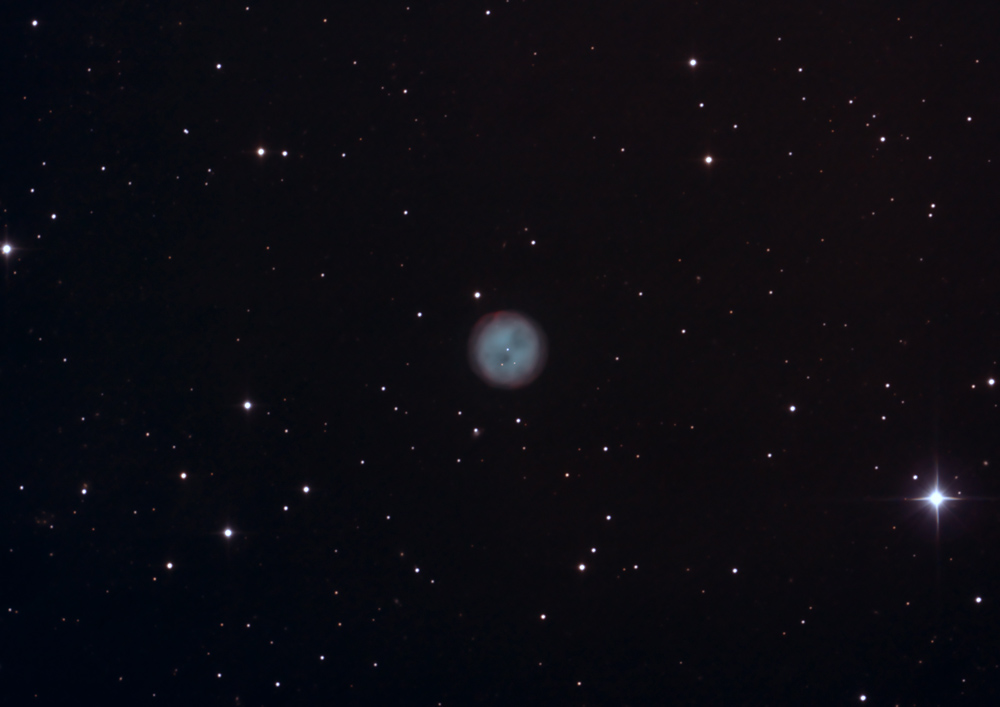 |
M97 - The Owl Nebula in Ursa Major
 |
Copyright 2007 Hap Griffin
Some stars near the end of their life form "planetary nebulae", whereby they loose material to space by either explosive means or by a less dense outpouring of material in all directions known as a solar wind. M97, popularly known as the Owl Nebula, is one of 1600 known planetary nebulae in our galaxy. Since the central star is dying and dissipating its matter to space, the lifetimes of these objects is relatively short...around 50,000 years. M97 is at the far end of this range as shown by its lack of a bright outer rim and a partially filled in open core where fierce solar winds once cleared the area. The appearance of these partially hollow areas form the "eyes" of the "owl".
M97 lies
at a distance of 2600 light years.
Date/Location:
December 17, 2007 Griffin/Hunter II Observatory Bethune, SC
Instrument: Canon 40D (modified IR filtering) Digital SLR through
10" Newtonian w/MPCC
Focal Ratio: f/ 4.7
Guiding: SBIG ST-237 through Orion ED80
Conditions: Damnably cold for a Southern boy
Weather: 15 F
Exposure: 135 minutes total (45 x 3 minutes @ ISO 800)
Filters: Baader UV/IR block internal to camera
Processing: Focused and captured, RAW to TIFF conversion,
flat frame calibration, Digital Development, resizing and JPEG conversion in ImagesPlus.
Final tweaking in Photoshop
CS2.